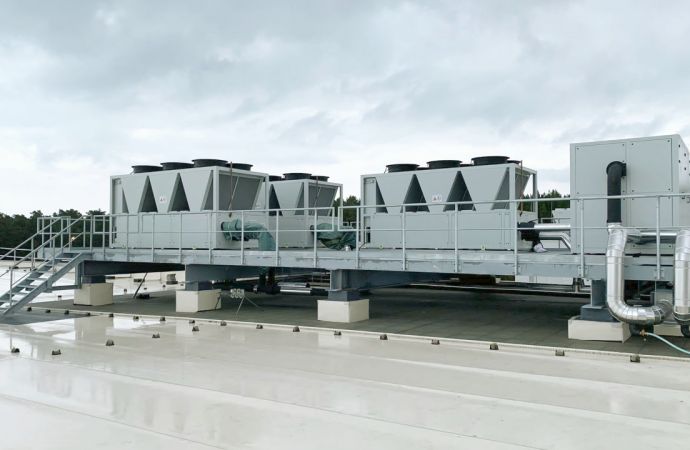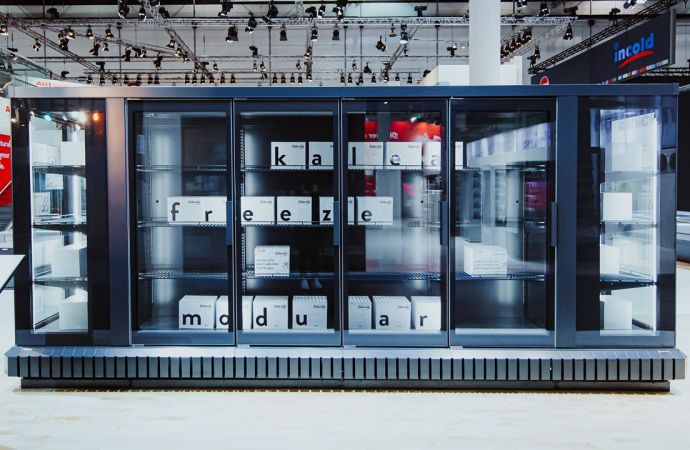Study of flammability risks looks at standards for commercial refrigeration and air conditioning.

A new report issued by the Air-Conditioning, Heating, and Refrigeration Technology Institute (AHRTI) makes a number of recommendations pertaining to the safe use of hydrocarbon (A3) refrigerants in commercial refrigeration and air conditioning, including some that challenge “either existing or proposed standards.”
The AHRTI report, “Benchmarking Risk by Whole Room Scale Leaks and Ignitions Testing of A3 Refrigerants,” focuses on single-door and three-door reach-in coolers in a convenience store and PTAC and mini-split air conditioners in a motel room. AHRTI is the research arm of the Air-Conditioning, Heating, and Refrigeration Institute (AHRI).
The objective of the study was to conduct leak and ignition testing for R290 (propane) “under whole room scale conditions to develop data and insight into the risks associated with the use of Class A3 refrigerants and to generate technical data to support revisions of relevant safety standards.”
AHRTI designed its testing scenario according to the existing requirements or proposed requirements in the IEC (International Electrotechnical Commission) Standards IEC 60335-2-89 (for commercial refrigeration products) and 60335-2-40 (for air-conditioning products) and their equivalent North American version published by UL.
“Over the course of the project, the test results were presented to the working groups of the IEC SC61C/WG4 and IEC SC61D/WG16 while they were revising the contents related to using A3 refrigerants in the IEC 60335-2-89 and IEC 60335-2-40 respectively,” the report says.
In June, the IEC updated its 60335-2-89 standard to include an increase in the charge limit for A3 (flammable) refrigerants to 500 g from 150 g – as well as a rise in the charge limit for A2 and A2L (low flammable) refrigerants to 1,200 g from 150 g. The new standard is now being considered for adoption by regional standards bodies around the world.
We did a huge amount of work on this; across the various stakeholders, almost 100 experiments were carried out.”
- Daniel Colbourne, GIZ Proklima
One of the areas AHRTI examined in coolers is the “door-opening test” required in the updated IEC 60335-2-89 standard after a full-charge release inside of a closed cabinet, which is required in the updated IEC 60335-2-89 standard.
In conclusions relating to both IEC and UL 60335-2-89, the AHRTI report said,
“The criteria used for requiring the door-opening test to be performed to be performed should be revisited. Empirical validation should guide the selection of criteria. The test also requires that the concentration of refrigerant not exceed 50% of LFL within five minutes of the door having been opened. Extending this time period may be another way that the test could be made more conservative; that is, extending the time period in which refrigerant could build up. “
The conclusions also include:
- “Additional mitigation requirement should be assessed to further allow higher charge, such as using fan circulation to dilute leaked refrigerant or shut-off valves to limit the leaked refrigerant quantity.”
- “This study and the National Fire Protection Association (NFPA) A3 study showed that external leaks that occur higher up in elevation on the cooler cabinet are much less likely to produce a flammable cloud near floor level. The standards committees might consider having different requirements between condensing units high up on the cabinet and condensing units lower or at floor level. This assumes the condenser assembly is the highest probability leak location. However, this assumption needs to be confirmed from the field data.”
Daniel Colbourne, a consultant for GIZ Proklima, who worked on the new IEC hydrocarbon standard, took issue with some of the conclusions of the AHRTI report.
In regard to the door-opening test, he said, “We did a huge amount of work on this; across the various stakeholders, almost 100 experiments were carried out.”
The assessment of additional mitigation requirements “has already been done as part of the work of WG (Working Group) 4 for IEC 60335-2-89,” said Colbourne.
Regarding having different requirements for condensing units depending on elevation, “we know this full well from all the background work carried out under WG4,” he said. “It’s much, much easier to pass the surrounding concentration test Annex CC with a top-mounted condensing unit rather than a floor-mounted.”
The AHRTI report acknowledged that some of its tested ignition events represented the “worst-case scenarios” with low probability of occurrence. “Therefore,” it said “the adoption of the test results to relevant standards will eventually rely on these committees because individual members have different acceptable thresholds for a harmful event severity and likelihood.”
The AHRTI report was prepared for the California Air Resources Board CARB). It is part of a larger $5.6 million collaborative research program jointly funded by AHRI, American Society of Heating, Refrigerating and Air-conditioning Engineers (ASHRAE), the U.S. Department of Energy (DOE) and CARB.
Related stories



